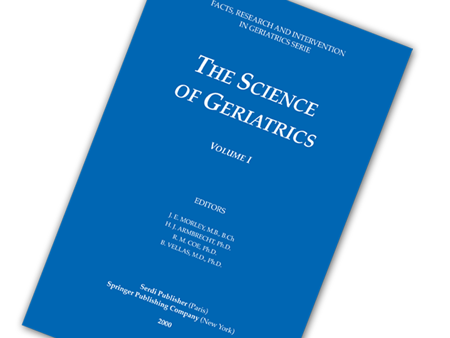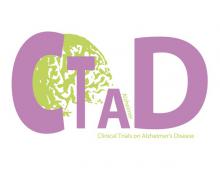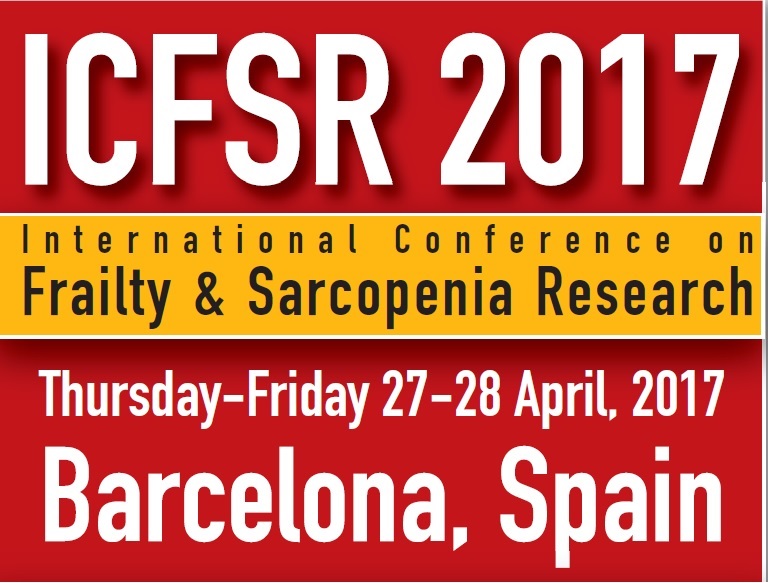The 10th international conference on Clinical Trials in Alzheimer’s Disease (CTAD) welcomed some 1250 delegates to Boston, Massachusetts on Wednesday, November 1, 2017 for a meeting to discuss progress and disappointments in drug development for Alzheimer’s disease (AD).
Moving Towards Prevention
Keeping with the theme of intervening early in the disease, Reisa Sperling, MD, a neurologist at Brigham and Women’s Hospital and Massachusetts General Hospital Memory Disorders Unit in Boston, and the principal investigator of what Professor Bruno Vellas called “the most relevant trial in the field,” delivered the conference’s first keynote address on AD prevention trials. One of the most significant advances in the past ten years of research has been the recognition that AD represents a continuum, with the disease process beginning decades before the dementia stage, she said. Intervening in the pre-clinical stage of disease may be the best opportunity to “bend the curve” of disease progression, she said.
Dr. Sperling leads the Anti-Amyloid Treatment in Asymptomatic Alzheimer’s (A4) study, now underway at 67 sites in the United States, Canada, and Australia. Just last week, the study met its enrollment target, and now has 1151 cognitively normal participants between the ages of 65 and 85 enrolled. All participants showed evidence of elevated levels of amyloid in their brains, suggesting that the disease process may have already begun. Dr. Sperling said that research shows that cognition declines faster in people with elevated brain amyloid compared to those with no brain amyloid. The participants will be treated with a monoclonal antibody called solanezumab, which binds to amyloid to prevent its build up in the brain. Although a recent trial of solanezumab in people with mild AD failed to slow cognitive decline, there is hope that the drug will be more effective when given before substantial brain degeneration has occurred. The A4 study is also quadrupling the dose and will treat participants for a longer duration than in the earlier trial.
Nonetheless, Dr. Sperling said even preclinical AD may be too late to reverse the disease process. Thus, two other studies are getting underway: the EARLY trial, which will include participants as young as 60 who have are clinically normal but considered at high risk of developing AD either because a parent or sibling has or had AD, or because they carry the ApoE4 gene that increases risk, or because they have tested positive for brain amyloid; and the Ante-Amyloid Prevention of AD (A3) trial, which will enroll participants possibly as young as 50 who do not have elevated brain amyloid but are thought to be at elevated risk of AD. Both of these trials will test a different type of drug called a BACE inhibitor, which inhibits the production of amyloid.
Dr. Sperling noted that other prevention trials are also being conducted, including primary prevention trials in young participants who are nearly certain to get AD because they carry identified genetic mutations. “These trials are important but I don’t think they are sufficient. We need to do more,” she said. This includes starting combination therapy trials, developing novel ways of assessing effectiveness, including measuring things that are important to peoples’ lives, and getting more efficient in the way clinical trials are conducted.
“Alzheimer’s disease is a formidable foe,” she said. “We have to be bolder and we must be resolute, because we cannot fail,” said Dr. Sperling.
Are More Effective Drugs the Answer?
CTAD always features many presentations on new drugs in the pipeline. Rachelle Doody, MD, PhD, Global Head of Neurodegeneration at Roche and Gregory Klein, PhD, also of Roche, presented some of the latest data on gantenerumab, another monoclonal antibody against amyloid. Two clinical studies of this drug – SCarlet RoAD and Marguerite RoAD – were suspended in 2014 after an analysis concluded it would be futile to continue these studies as originally designed.
However, since data from these trials suggested that amyloid removal was indeed taking place, Roche investigators used data from the studies as well as other published monoclonal antibody data to model what would happen to different subgroups of participants (such as those who carry the ApoE4 gene) if the dose was increased. The big worry was brain edema, which shows up as ARIA-E (amyloid-related imaging abnormalities) on MRI scans, said Dr. Doody. The model predicted that slow titration would lower the risk of ARIA-E, and supported exploring higher doses of gantenerumab by titrating the dose upward in a gradual manner, she said. This led the company to continue the gantenerumab trial in an “open label extension” study offered to trial participants. Positron emission tomography (PET) scans were used to assess levels o brain amyloid.
Dr. Klein said this study showed that higher doses of gantenerumab reduced brain amyloid significantly more than lower doses did. In about one-third of the patients studied, brain amyloid levels were reduced to what are considered “normal” levels. Now the investigators are studying whether there was also a change in cognition, although Dr Klein cautioned that the study wasn’t designed to detect cognitive changes.
Other new therapies were discussed on Thursday, November 2nd. Samantha Budd Haeberlein, PhD, vice president of Alzheimer’s discovery and development at Biogen reported 36-month data from a long-term extension of a Phase 1b trial of aducanumab, another anti-amyloid monoclonal antibody, in participants with prodromal or early AD. These data indicate that brain amyloid, as measured by PET, decreased in a dose- and time-dependent manner, said Dr. Budd-Haeberlein. Interestingly, in the highest dose group (10 mg/kg), the levels of brain amyloid appeared to plateau at about 110 weeks, below the cutoff for pathological levels. “The take-away is that by 2 years with 10 mg/kg we are seeing maximal reduction in amyloid plaque as measured by PET,” she said. Clinical endpoints also improved and the drug continued to demonstrate a good safety profile. Taken together, these results continue to support further investigation of clinical efficacy and safety, she said.
Another investigational therapy, ABBV-8E12, targets not amyloid but tau, the protein that accumulates as neurofibrillary tangles in the brains of people with AD. Kumar Budur, MD, Group Medical Director of Neuroscience at AbbVie described a Phase 2 study underway in participants with early AD. Earlier, a Phase 1 study demonstrated a good safety profile in patients with progressive supranuclear palsy, another “tauopathy.” The Phase 2 trial will be conducted at 11 sites around the world and will enroll participants with early AD (MMSE scores of 22 or higher and clinical dementia rating scores of .5) between the ages of 55 and 85 with positive amyloid PET scans. The drug will be given at three doses for a duration of 96 weeks with the primary endpoint an improvement on a clinical dementia rating scale called CDR-SB.
Industry and Academia Working Together
A theme that emerged throughout the day on Thursday was the need for academic and industry scientists to work together to move the needle on developing effective treatments for people with AD. Dr. Doody, who had a long and distinguished career in academia before making the move to industry in 2016 addressed this in her keynote address, noting that while both academia and industry have strengths and weaknesses, neither alone can solve the problems that have slowed drug development. Moreover, she said, all the AD drugs available today began with fruitful collaborations. However, no new drug has been approved
since memantine in 2003, and as reported in a frequently cited 2014 paper, between 2002 and 2012 the overall success rate of clinical trials for AD drugs was a paltry 0.4%.
Dr. Doody said that among the unintended consequences of this review paper, there has been diminished enthusiasm from members of the public regarding trial participation. At the same time, there has been much progress in understanding pathological mechanisms and the many contributors to pathology in AD; and there are many new strategies for treatment that are being pursued in academia and industry. “We need to work together to send a positive message,” she said.
This message of unity was reiterated later in the day at a symposium where Michael Egan, MD of Merck presented data on the Phase 2/3 EPOCH trial of the BACE inhibitor verubecestat for mild-to-moderate AD. The drug has been shown to markedly reduce amyloid-beta production in animal models and was shown in Phase 1 studies to be safe and well tolerated. Based on those findings, Merck launched a worldwide trial at 238 sites in 21 countries. But after 78 weeks of treatment, no significant differences were observed between placebo and two treatment arms on any measures of efficacy, and the Data Monitoring Committee recommended stopping the trial 5 months early.
Dr. Egan said that Merck scientists have continued to analyze data collected during the trial to see if there was any evidence of efficacy in participants who were younger, in earlier stages of the disease, or who had other differentiating characteristics. While they found no signs of efficacy, they did confirm, in a biomarker substudy, that there was a significant reduction in brain amyloid (by PET imaging) and cerebrospinal fluid levels of amyloid in the treated groups compared to placebo. There was also increased brain shrinkage and some increased adverse effects. The company will continue to study these data to extract other learnings, he said.
Paul Aisen, MD, director of the Alzheimer’s Therapeutic Research Institute (ATRI) at the University of Southern California said that while this was a “thoroughly negative trial,” the dramatic reduction of amyloid beta production is a very important finding. “We learn a great deal from negative trials,” he said. Jeffrey Cummings, MD, ScD, Director of the Cleveland Clinic, Lou Ruvo Center for Brain Health added, “This is a milestone study.” He said as the first test of a BACE inhibitor, it was a trial that had to be done and he congratulated Merck on dong a very convincing study.
Maria Carrillo, PhD, chief science officer of the Alzheimer’s Association concurred. “We’re only at the beginning of our understanding and exploration of potential treatments,” she said. “Only by working together and sharing positive and negative findings can we accelerate this process.” Dr. Carrillo added that while everyone is disappointed by negative trials such as this, when a trial ends and participants are told that it was negative, they are eager to sign up for the next trial. “This is a disease that is not tentative and we can’t be tentative either,” she said. “We have to be relentless.”



